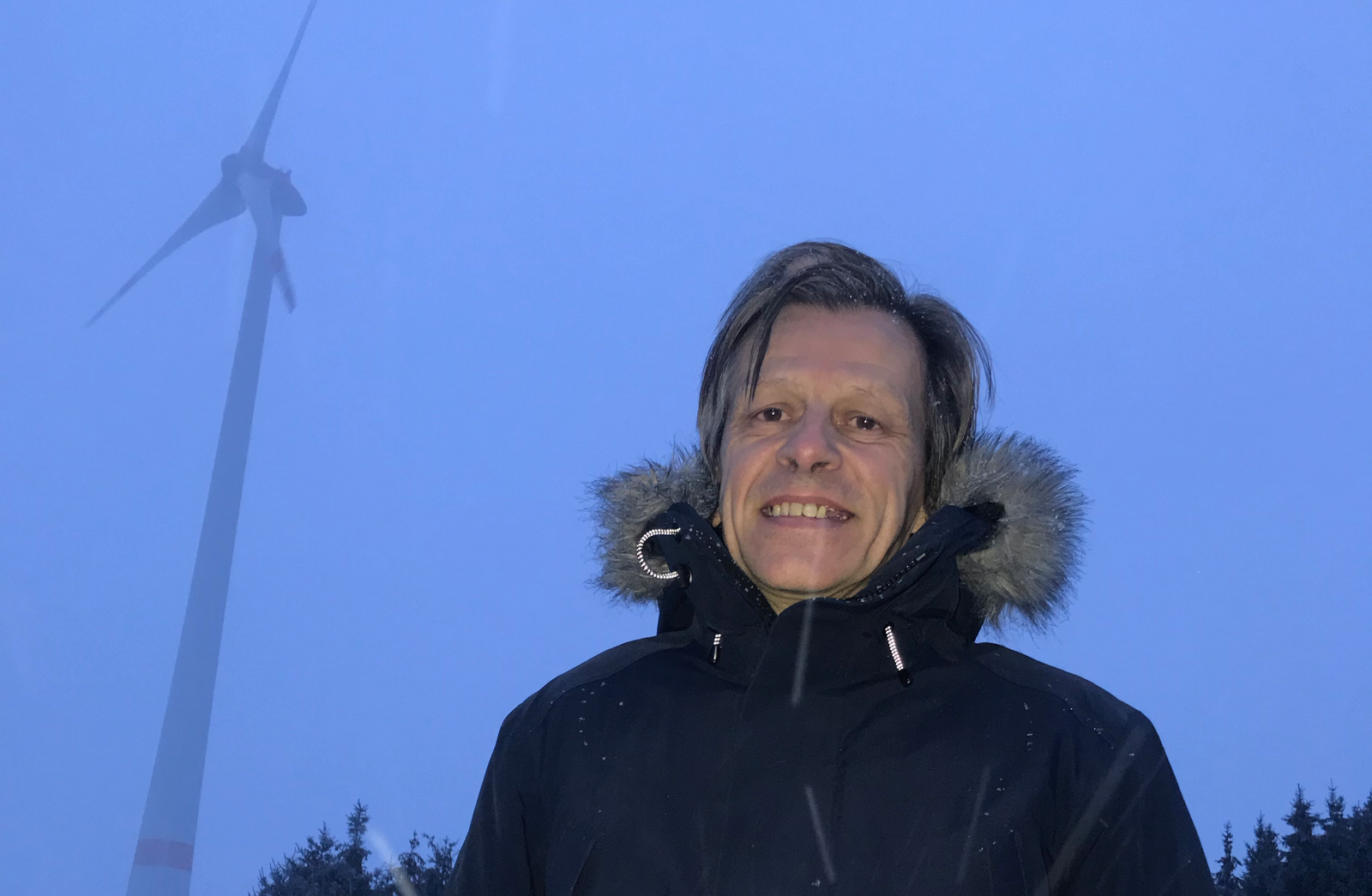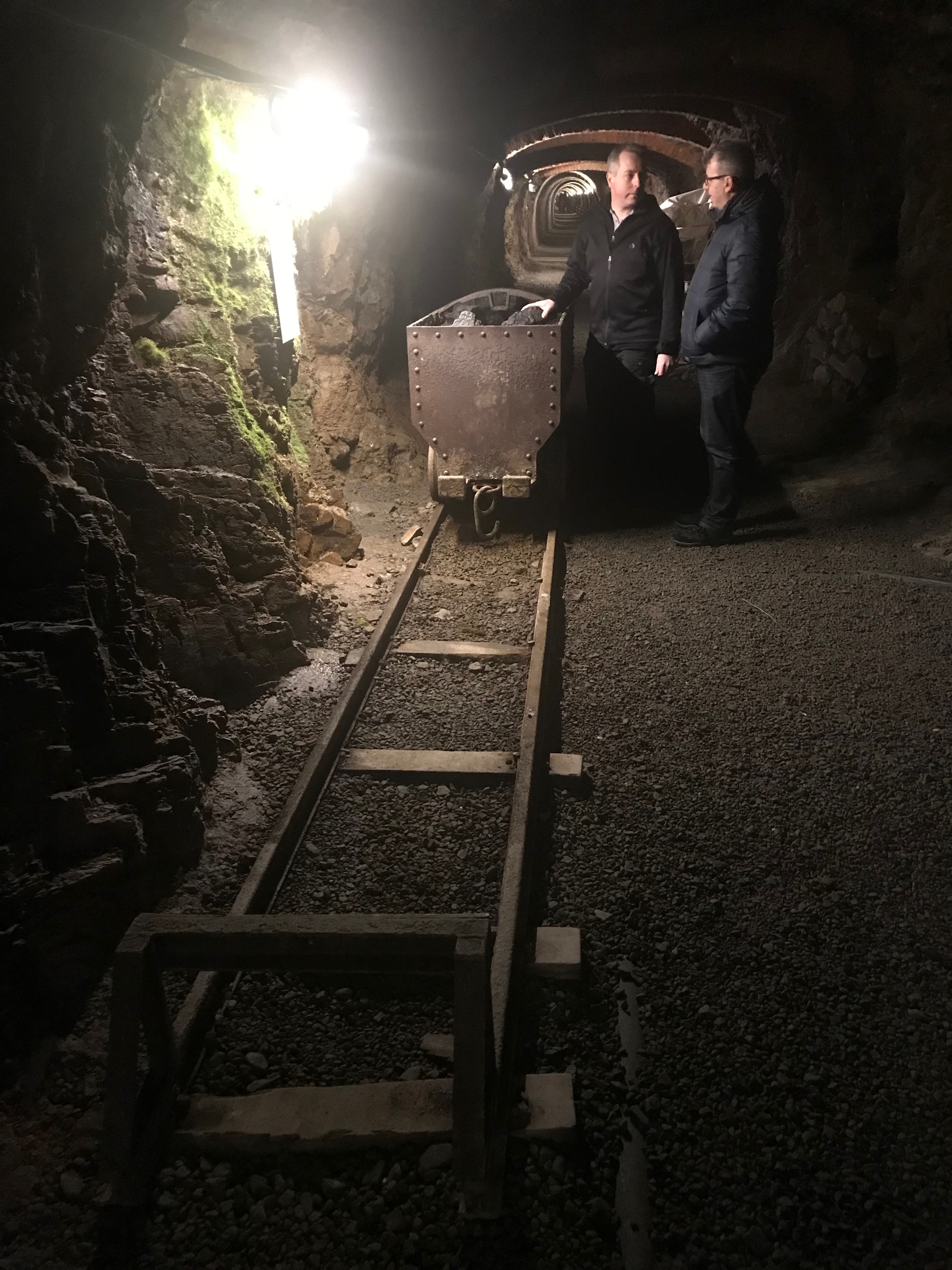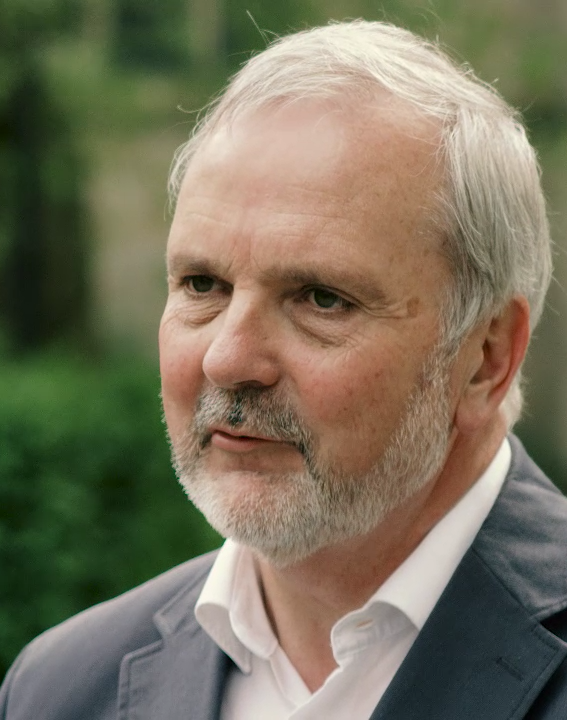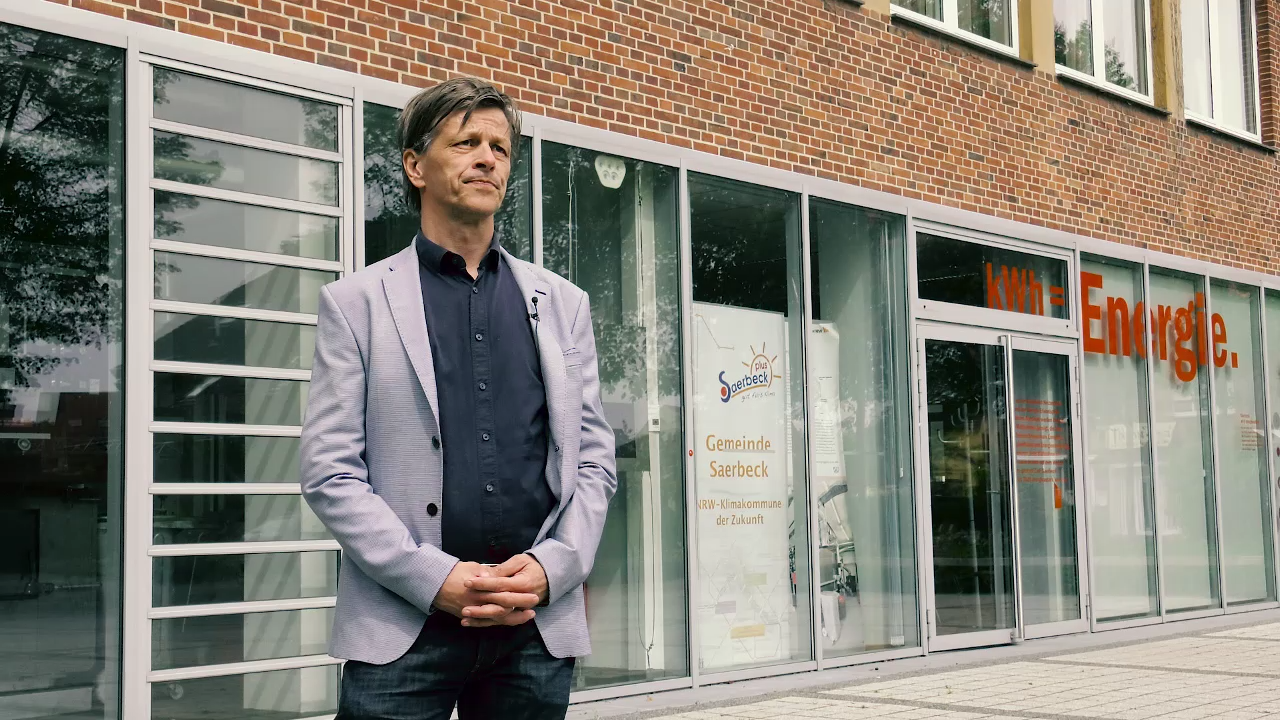By David Dodge and Scott Rollans
Judging by a small town in northwestern Germany, local initiatives might provide the quickest pathway to global renewable energy. Just ten years into its “energy autonomy” project, Saerbeck (population 7,200) already produces four times more renewable energy than it needs—more than justifying its self-declared title as “Climate Community of the Future.”
Amazingly, this small-scale revolution took place in the state of North Rhine-Westphalia, the traditional heartland of German coal and steel production. Saerbeck’s ambitous project was inspired by the German concept of energiewende—a nation-wide energy transition away from coal and nuclear power. In places like Saerbeck, energiwende has led to community ownership and democratization of the energy supply.
“We produce our energy for our own,” explains project manager Guido Wallraven. “We are investing in these renewable energies, as well as using them for our private and business purposes.”
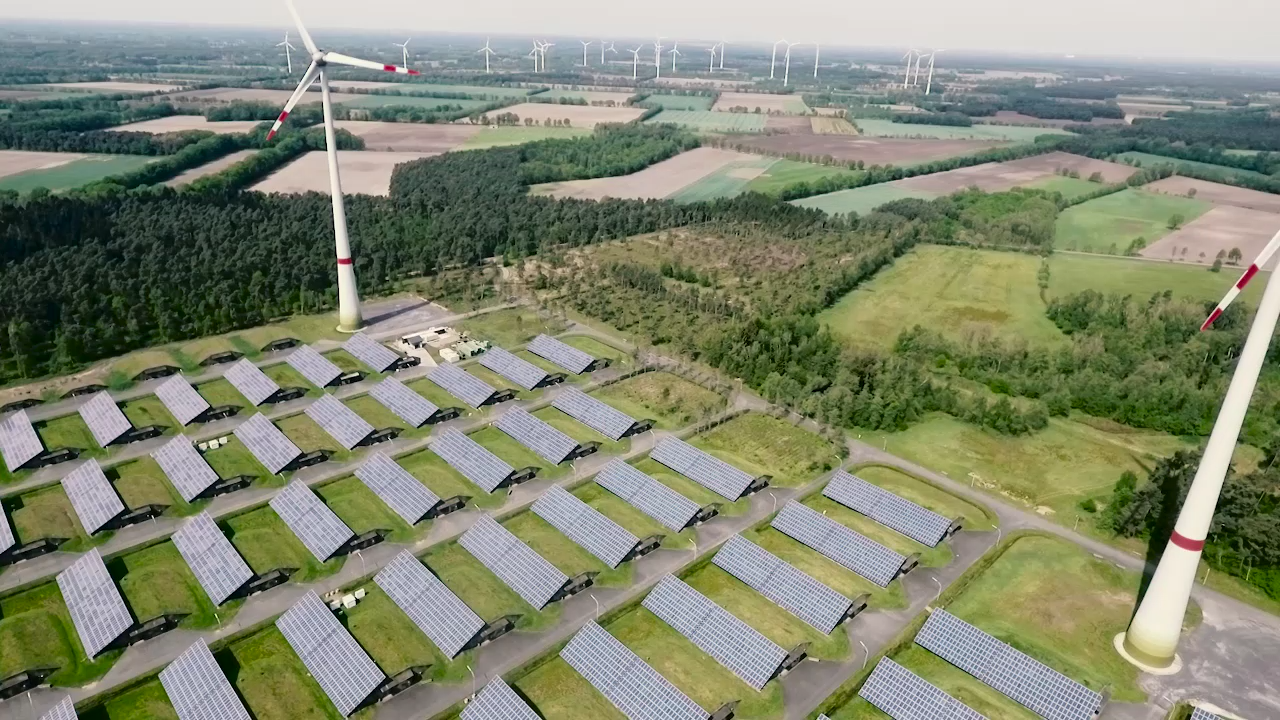
Saerbeck residents undertook 500 projects and built a BioEnergy Park to produce 400 per cent as much renewable energy as they use.
Half of Saerbeck’s residents involved
Saerbeck has succeeded because its residents embraced the concept—led by their mayor, Wilfried Roos. Wallraven estimates 60 to 70 per cent of residents have either done their own projects or are otherwise directly involved in the municipal effort.
The initiative began at the grassroots, with citizens undertaking more than 500 solar and energy projects on private homes, businesses and farms. Those projects produce enough electricity to serve almost half of their 7,200 citizens.
Then the town followed suit. “We replaced the energy supply of all school buildings in Saerbeck and some kindergartens and other facilities from the former gas to a climate-friendly way, which is the district heating system based on wooden pellets,” says Wallraven.
Then, led by Mayor Roos, the citizens formed a cooperative with 400 investors, most of them local. First, they took over an old German army ammunitions facility, transforming it into a Bio-Energy Park. They invested €50 million to construct a 5.7-megawatt solar farm on top of old army bunkers. The cooperative then invested in one massive wind turbine plus six other turbines located on the site.
Next, they partnered with farmers and the local municipality. “We installed two big biogas plants using the local biomass input we have here as a rural region,” says Wallraven. The biogas produces electricity and heat, and the residue is used as compost.
The farmer-owned biogas plant uses manure and corn as inputs and the municipal biogas plant uses sorted organic waste from the region. Together, these projects produce four times as much electricity as the town consumes.
Saerbeck has cut its greenhouse gas emissions by almost 40 per cent to 5.5 tonnes/capita. They are now looking at district heating for the wider community to push the numbers even lower.
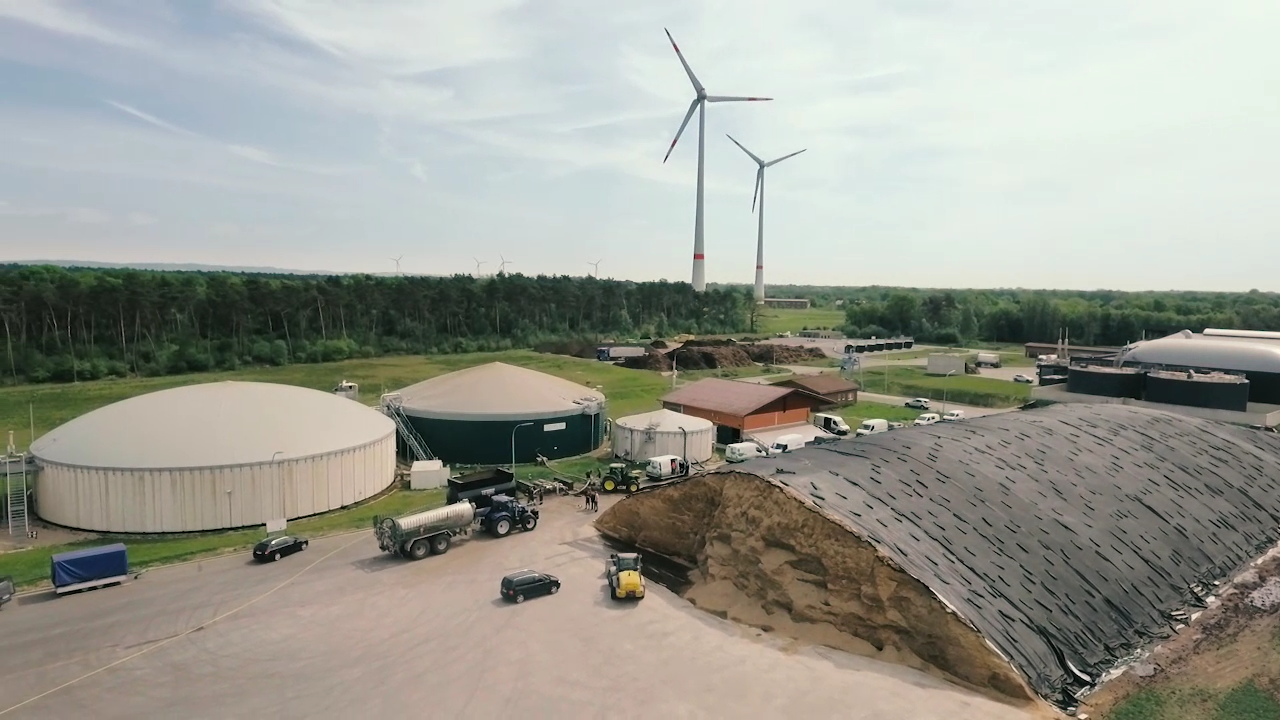
Saerbeck worked with local farmers and the municipality to build two biogas plants at the BioEnergy Park.
Residents created the Climate Community
From the very beginning, Saerbeck’s journey has been driven at the local level. “We were absolutely convinced to bring as many people as possible in projects,” says Wallraven. Ten years after the project’s launch, a committee of local residents continues to meet every month to discuss next steps for their climate community.
Throughout, Saerbeck has relied on Mayor Roos’s strong leadership. Wallraven explains, “In Germany, we call this ‘Kümmerer.’ This is someone who takes care –– deeply takes care of all this stuff, who stands for the ideas, who is a representative to everyone in Saerbeck. Everyone can ask him questions and give their own ideas for the climate-friendly way of living in Saerbeck, and he will adopt these ideas as his own,” says Wallraven.
Climate jobs
Back when the German army still maintained their ammunitions site, the facility employed roughly 70 people. The BioEnergy Park added 80–85 jobs—including five teachers, to handle the high demand for educational programs on climate change and clean energy.
Climate tourism
These amazing achievements have attracted plenty of outside interest. “We are counting more than 100,000 people who came in the last five six seven years to see our projects,” marvels Wallraven. Many of us find climate change terrifying and daunting, but visitors are often inspired by Saerbeck’s example.
In November, “Climate Community of the Future” threw a party to celebrate its tenth anniversary. “We opened the gates in the BioEnergy Park for the public and we expected, let’s say, 7,000 to 10,000 people to come,” says Wallraven.
“More than 30,000 people came to visit us. …Most of the people came with a smile on their face when they entered BioEnergy Park, and they got much more smiles on their face when they left in the evening.
“For me, personally this was the highlight of my work here for the last 10 years,” says Wallraven.
Wallraven looks forward to more opportunities to find local solutions for climate change, both in Saerbeck and beyond. “This is not only a task of a small city in western Germany called Saerbeck, but this is a task and a challenge for everybody living on this planet.”
